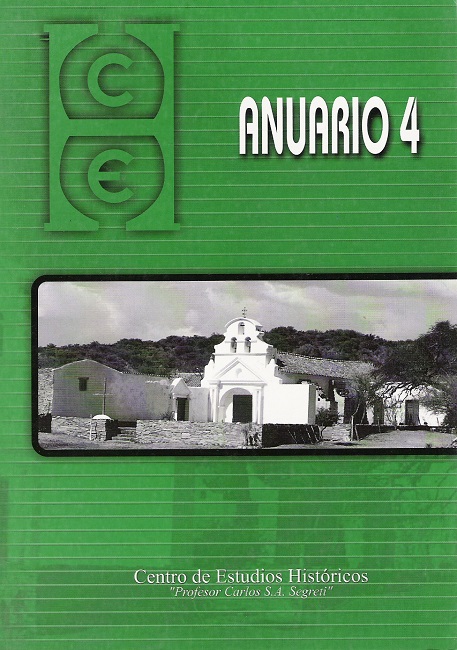Slaves of the Jesuits in the Memorials of the Province of Paraguay (XVIII Century)
DOI:
https://doi.org/10.52885/2683-9164.v.n4.23270Abstract
The expulsion of the Hispanic territories surprised the Jesuits in a virtual reliance on a large population of African slaves. Towards 1767, more than 3,500 Afro-Americans were working in the Colleges and properties of the Company in Colonial Argentina. The slaves constituted an essential factor of the Jesuit system. Almost a 30% of the Jesuit capital in the region was invested in them. With the purpose of administering that important mass of slaves, the Jesuits applied a coherent and methodical system that is largely reflected in their Memoriales, the specific orders and suggestions that the Jesuit Provincials elaborated in their personal visits to each College, approximately every three years. Mandatory read for the community, the Memoriales were conceived to include all the activities that were carried out, spiritual as well as material. Written in the same places where the difficulties and problems aroused, they reflected the daily life in Jesuit Colleges and properties. Based on the study of Memoriales of Paraguay, written during the first half of 18 Century, I analyze in this work the main guidelines of the Jesuit slavery policy, particularly with respect to conditions of life and disciplinary control.
Downloads
References
BAUER A., “Christian Servitude Slave management in colonial Spanish America”, en MUNDAHL M., SVENSSON (edit.), Agrarian Society in Histiry. Enssays in Honour of Mgnus Morner, Londres, Routledge, 1990.
CHEVALIER F. (comp.), Instrucciones a los hermanos jesuitas administradores de haciendas, México, UNAM, 1950, (Aantonil), J, Cultura e opulencia do Brasil, Sao Pablo, Companhia Editora Nacional, s/f y J. Benci, Economía Crista dos Senhores no Governo dos Escravos (Livro brasileiro de 1700), Porto, Livraria Apostolado da Impresa, 1954.
DE LA FUENTE A., “Aguardiente y trabajo en una hacienda catamarqueña colonial, 1767-1790”, en Anuario IEHS, 3, Tandil, 1988.
FOUCAULT M., Vigilar y castigar, Nacimiento de la prisión, México, Siglo XXI, 1989.
GENOVESE E., Roll, Jordan, Roll; The World that Slaves Made, New York, Vintage, 1976.
KONRAD Herman W., Una hacienda de los jesuitas en el México colonial. Santa Lucía, 1576-1767, México, FCE, 1995.
MACERA P (introdc.), “Introducciones para el manejo de las haciendas jesuitas del Pesú (ss. XVII- XVIII)”, Nueva Coránica, II, 2, Universidad Nacional de San Marcos, Lima, 1966.
MAYO Carlos (ed.), La historia agraria del interior. Haciendas jesuíticas de Córdoba y el noroeste, Buenos Aires, CEAL, 1994.
Downloads
Issue
Section
License
Aquellos autores/as que tengan publicaciones con esta revista, aceptan los términos siguientes:
- Los autores/as conservarán sus derechos de autor y garantizarán a la revista el derecho de primera publicación de su obra, el cuál estará simultáneamente sujeto a una Licencia de reconocimiento de Creative Commons. Se puede compartir, copiar, distribuir, ejecutar y comunicar públicamente la obra, siempre que: a) se cite la autoría y la fuente original de su publicación (revista, editorial y URL de la obra); b) no se use para fines comerciales; c) no se altere, transforme o genere una obra derivada a partir de esta obra.
- Los autores/as podrán adoptar otros acuerdos de licencia no exclusiva de distribución de la versión de la obra publicada (p. ej.: depositarla en un archivo telemático institucional o publicarla en un volumen monográfico) siempre que se indique la publicación inicial en esta revista.
- Se permite y recomienda a los autores/as difundir su obra a través de Internet (p. ej.: en archivos telemáticos institucionales o en su página web) después del proceso de publicación, lo cual puede producir intercambios interesantes y aumentar las citas de la obra publicada. (Véase El efecto del acceso abierto).









